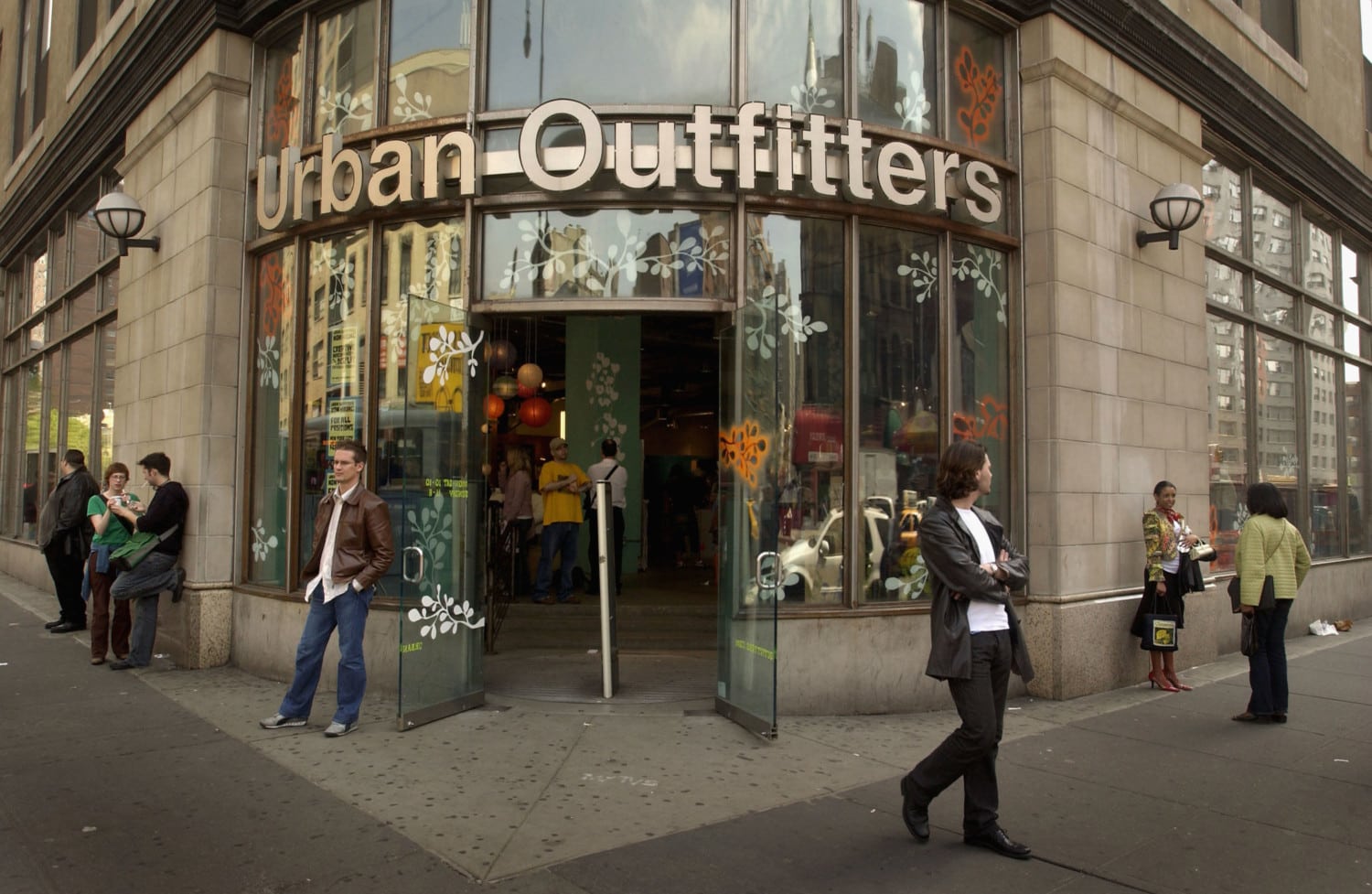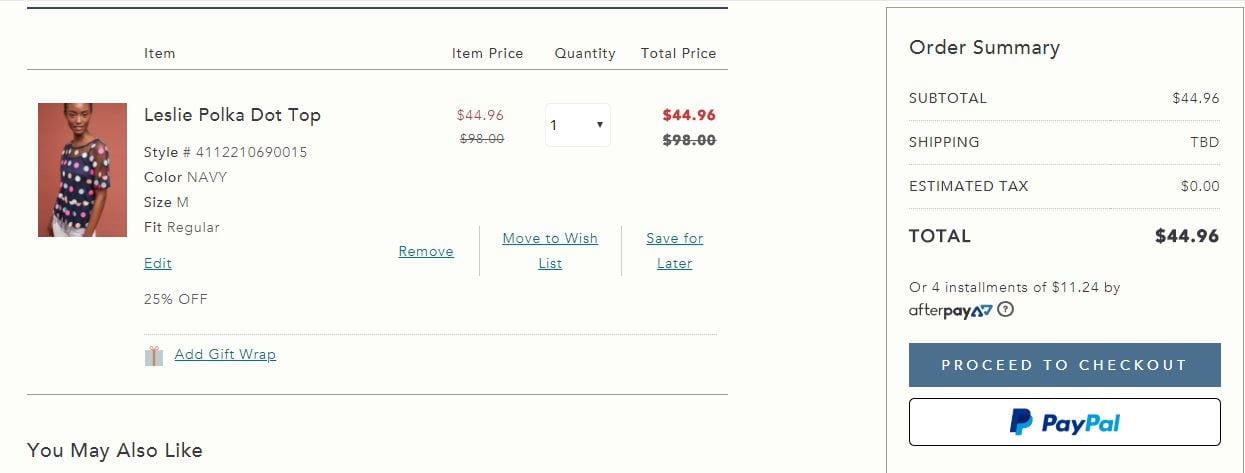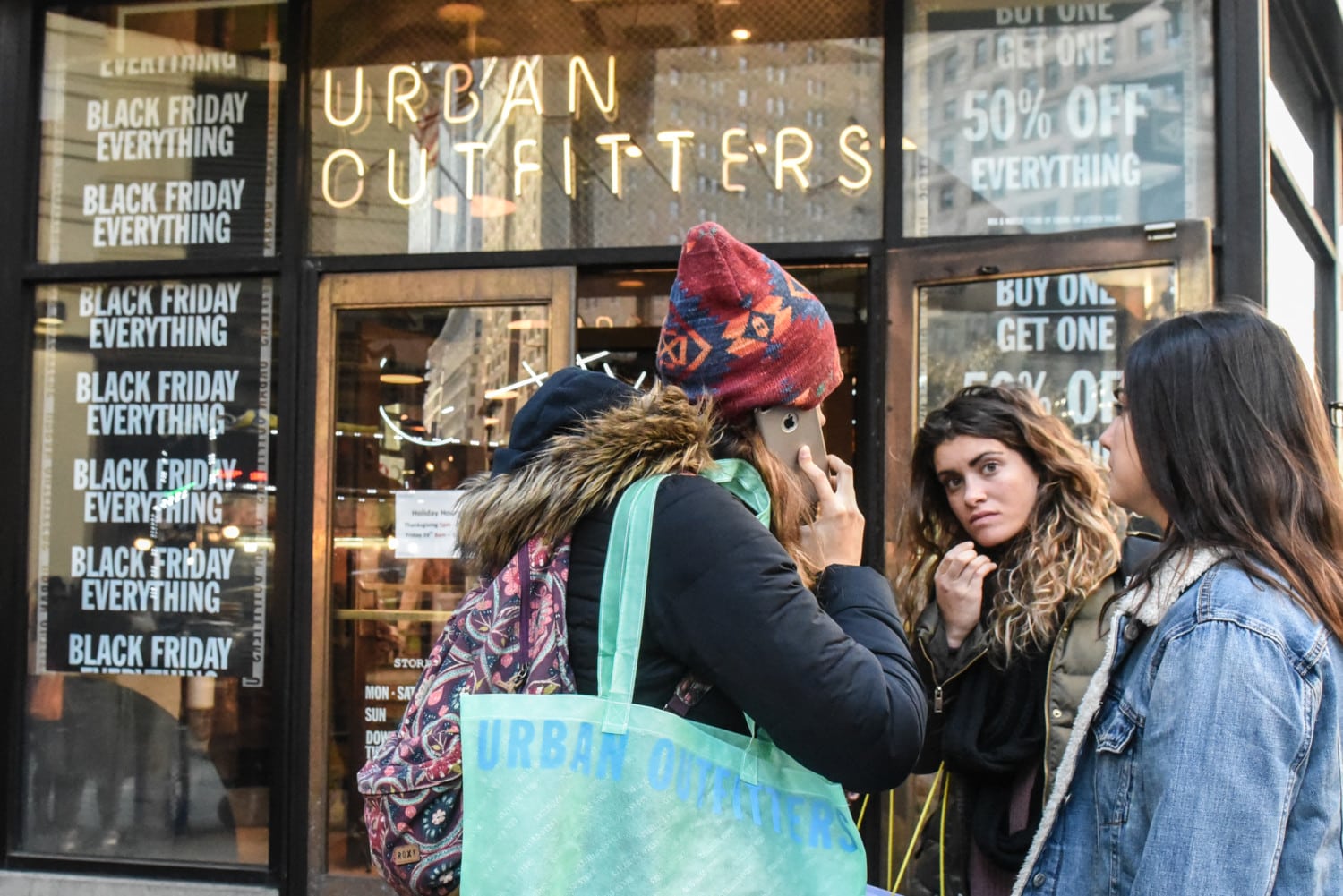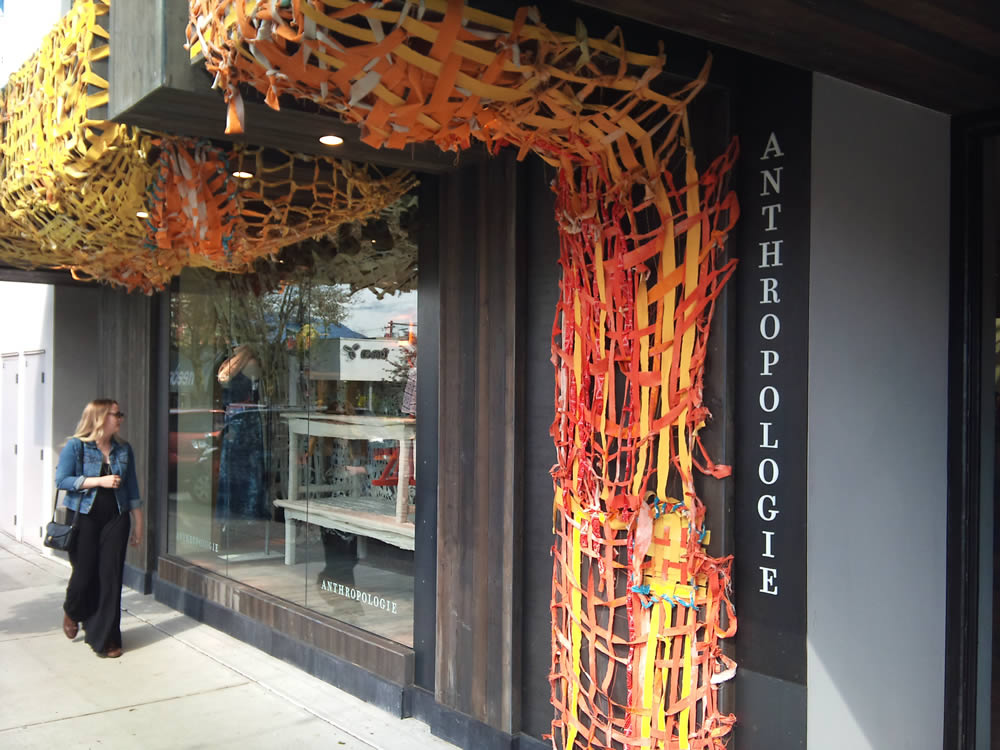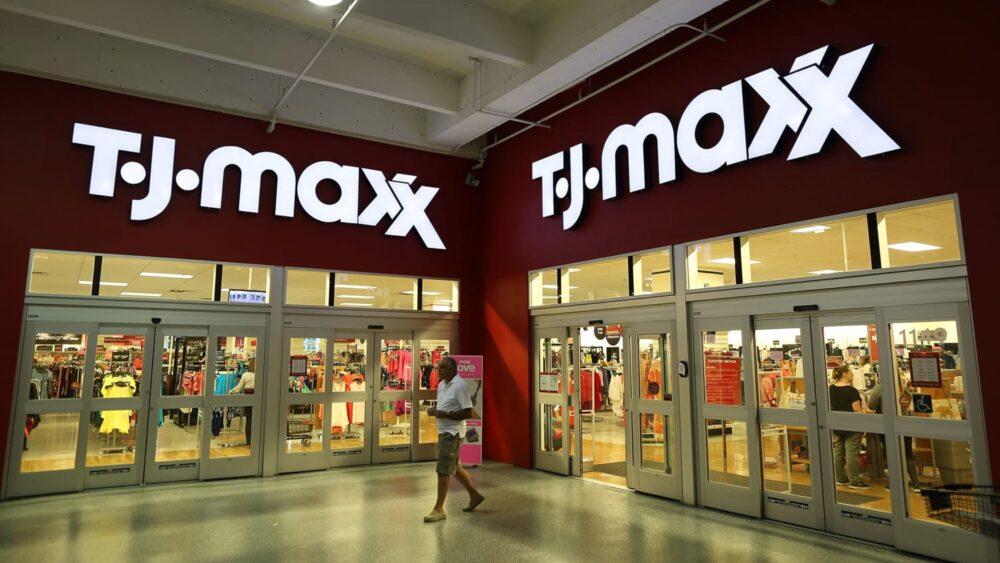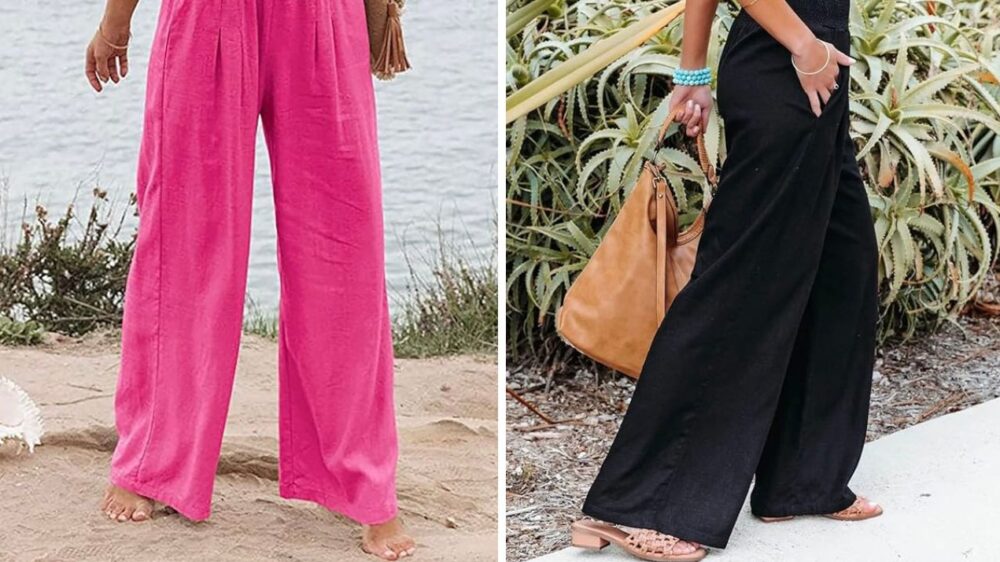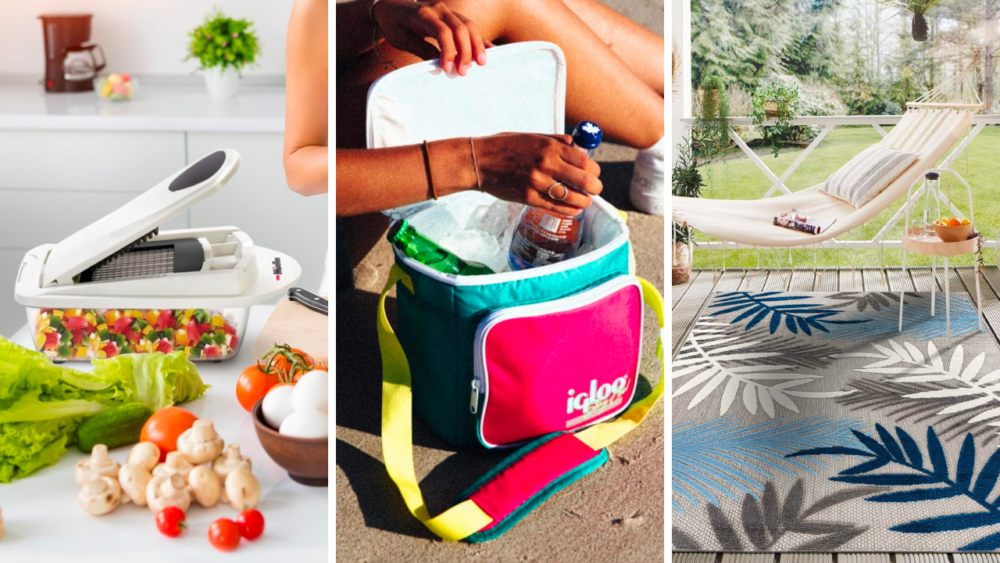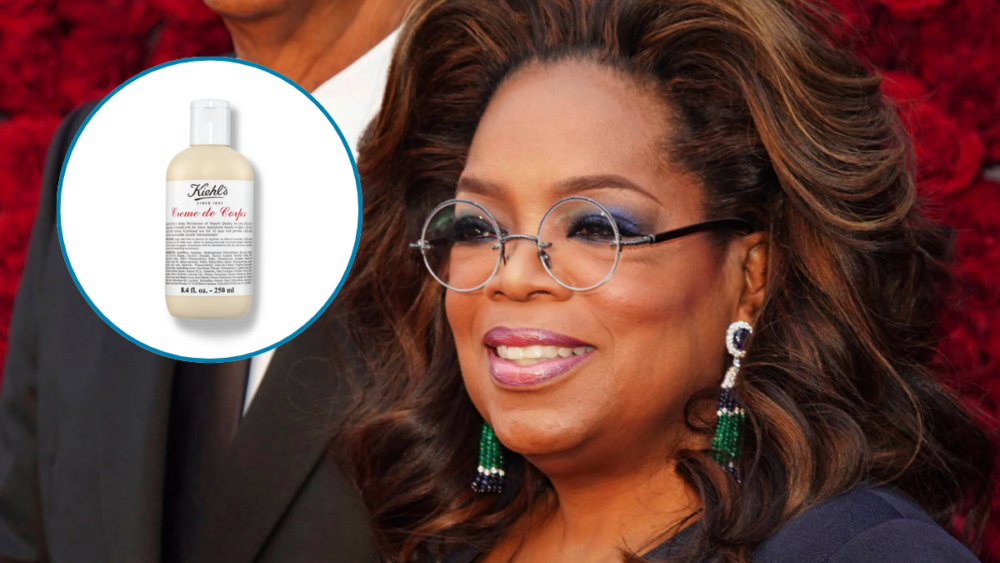Don’t have enough cash? This new service will let you pay for your clothes in installments
I’m making installment payments on a blouse and a dress from Anthropologie, which is not my style at all. Well, the ostentatious polka dots and florals — yes. That’s definitely me. But the pay arrangement is pretty atypical of my consumer behavior. Yet I’m all in and embracing it.
I was browsing Anthropologie’s website, and I noticed a new payment option called “Afterpay.” It works by offering interest-free installment plans for online purchases with a “buy-now, pay-later” concept. In a way, it’s like layaway, but in reverse. You get the instant gratification of adding clothes to your cart, but can spread out the payments.
I went from “just browsing” to adding items to my cart because the payments, when divided by four, seemed so approachable and within my budget.
Below is a screenshot of the blouse that is costing me four payments of $11.24, rather than a one-time $44.96 payment:
The Afterpay platform was founded in Australia and made its debut there in 2015. Now, it’s dabbling in the U.S. market with Urban Outfitters, Inc. and its portfolio of brands, which includes Urban Outfitters, Anthropologie and Free People.
“Afterpay helps shoppers get over that initial price hurdle by offering a platform to help budget for things that they want without needing to take out a loan or open a credit card,” says Nick Molnar, the Afterpay founder and CEO, in a news release. “This is particularly relevant for millennials who are reluctant to use credit cards and other forms of traditional finance.”
The service also appeals to retailers because it helps nudge people to buy, increasing those sales by 20 to 30 percent, according to the release.
It certainly worked on me, and I have a feeling I’m in the demographic they’re targeting with Afterpay. After all, whenever a clerk asks me if I want to save 10 percent by opening up a store credit card, I reply: “No thanks. I don’t believe in using credit to purchase clothes.” Because of this, the Afterpay model feels refreshing.
Sonia Parekh, a retail consultant with more than 20 years in the industry, explains that the traditional promotions retailers and consumers have become accustomed (and even addicted) to are a losing proposition.
“Retailers are forced to constantly run promotions and drop prices to drum up traffic and compete with each other,” she says. “No one wins when it’s a race to lower prices. Consumers believe they are getting bargains, but in reality the original price is meaningless and the promotional price has been set to make sure the retailer can still make some profit.”
Simply put, Parekh says, it’s a broken system.
Smart companies are now looking for ways to provide value to customers outside of the high-low promotion game, she explains. Afterpay is an example of a service that meets a customer need, but isn’t impacting prices.
In my opinion, Afterpay works best with retailers who aren’t having sales every weekend or running constant promotions. It would be a bummer to make payments on clothing items at full price and see them deeply discounted on the virtual clearance rack.
So, is Afterpay a service you would use? If so, what other brands and stores do you think would make good partners?


